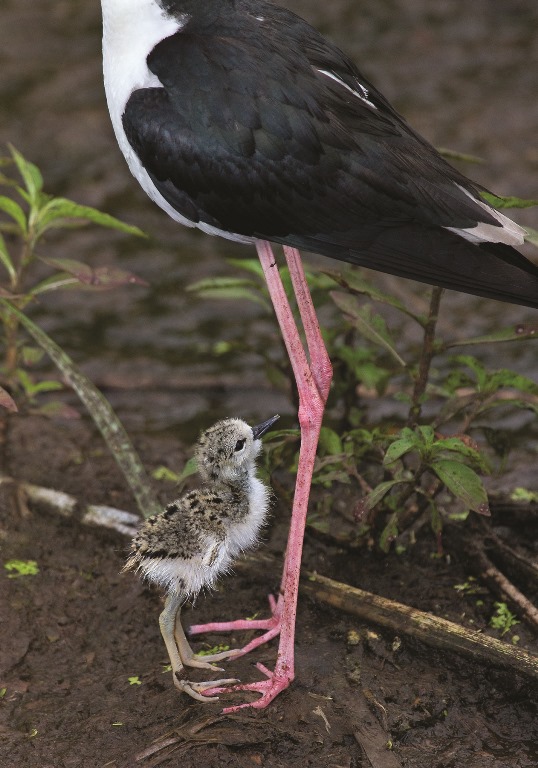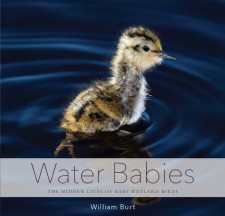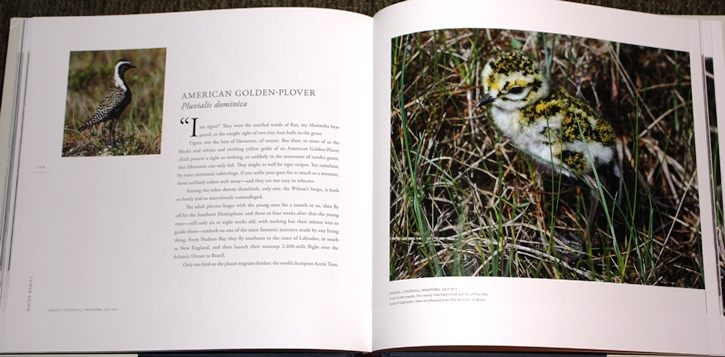Reviewed by Grant McCreary on February 12th, 2016.
When I think of ducks, it’s of birds on lakes and ocean in winter. Shorebirds are the “wind birds” of spring and fall, and denizens of coastal areas during winter. Aside from Greens in summer, Great Blues anytime, and the odd, wandering individual of other species, herons, egrets, and bitterns are stalkers of waterways to the south and along the coast. None do I regularly encounter as breeding birds, so their young are largely foreign to me. This will be different for each birder, of course, depending on where and when you go birding. But there are very few who have experienced these birds as depicted by William Burt in Water Babies: The Hidden Lives of Baby Wetland Birds.
Burt is a talented photographer who has an affinity for wetlands and a knack for capturing images of elusive birds, as demonstrated in his previous books: Marshes, Shadowbirds
(about rails), and Rare and Elusive Birds of North America
. Like them, Water Babies is a gallery of Burt’s photos, combined with his astute observations. The subject matter this time is the downy – or, in the case of herons, not-so-downy – young of wetland birds.
This volume covers 42 birds, broken down into seven sections: grebes, long-legged waders, ducks and geese, coot and gallinules, gulls and terns, shorebirds, and bitterns. Each account includes at least one image of both the young and adult of the species along with, on average, one page of text.
Burt’s images succeed because of two factors. First is the subjects themselves. These baby birds are exceptionally cute! What could be more adorable than the tiny striped head of a grebe chick sticking up from its resting place on its mother’s back, or a tiny fluffball of a shorebird baby laying on its back in the grass with its outsized feet held up as if saying “I surrender”? Then there’s the artistic and technical excellence of the photographs. The pictures look incredible and are carefully composed. Birds on the water, for example, appear exceptionally close and at eye level. Burt describes how he accomplished this – via a floating blind – in an appendix. You don’t have to be a professional photographer to appreciate the amount of time and effort it took to capture all of these images.
The cuteness factor will appeal to everyone (at least everyone with a soul). The technical merits and skill behind the photos will interest fellow photographers. But what about birders? They should love this book more than anyone. Interested in identification? Some of these babies are exceedingly difficult to ID; so much so that most of the time you have to rely on nearby adults to figure out what they are (and, as Burt tells us, you can’t even count on that when it comes to ducklings). If you think that’s an exaggeration, then what is the bird on the cover of this book?* I would be impressed if you can even narrow it down to genus.
But the foremost reason birders should enjoy Water Babies is the glimpse it provides into a relatively unfamiliar phase in the lives of these birds, both visually and through the text. You will learn much about these birds – why grebes eat feathers, for instance. Even so, the writing is not dry at all; Burt is extremely informal, peppering the text with personal anecdotes and observations. The Western Grebe has “the loveliest of grebe chicks.” The Whimbrel baby surprised him by not showing “at least a hint of the great sickle bill to come.” The accounts are short and earnest, leaving you wanting more.

Black-necked Stilt chick looking up at its parent. © William Burt
Recommendation
Water Babies: The Hidden Lives of Baby Wetland Birds is a treat. The incredible photographs will illicit plenty of ‘awwww’s, but are also interesting from an ornithological and photographical point of view. Likewise, the accompanying text is fun to read and informative. Anyone who likes birds in the slightest should enjoy it.
* The cover bird is a Red-necked Phalarope.
Disclosure: I get a small commission for purchases made through links in this post.
Buy from NHBS
(based in the U.K.)
Disclosure: The item reviewed here was a complementary review copy provided by the publisher. But the opinion expressed here is my own, it has not been influenced in any way.






[…] The Birder’s Library […]